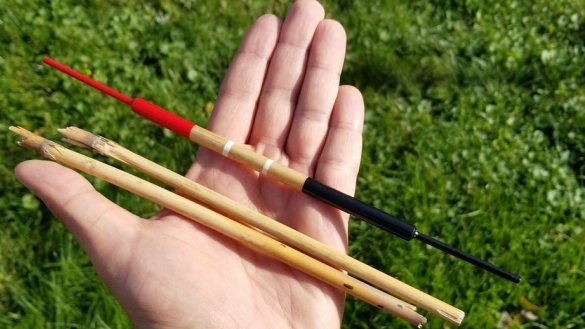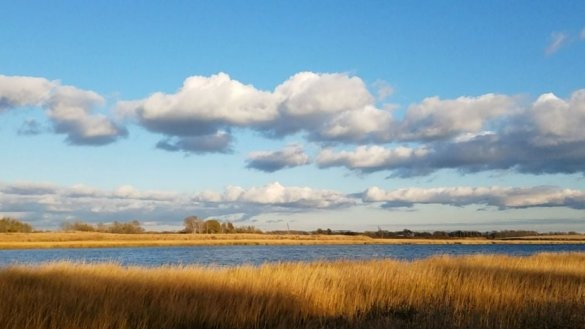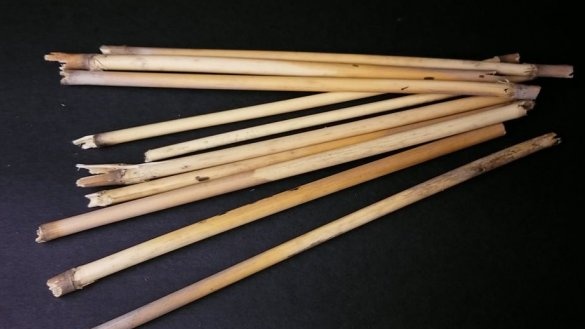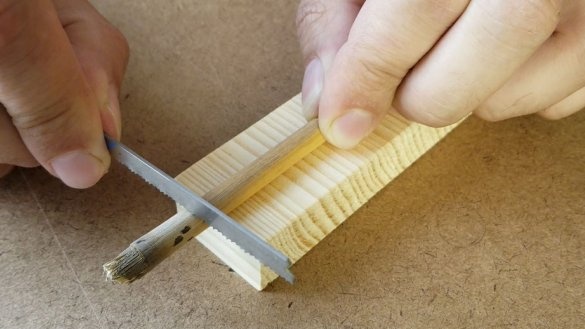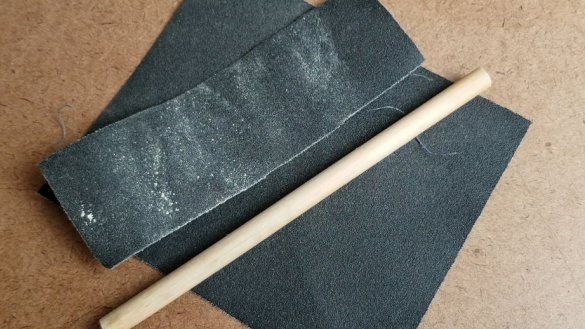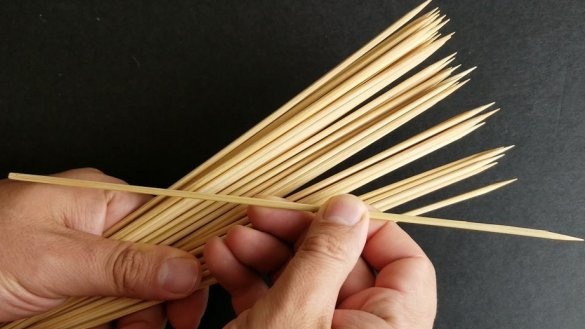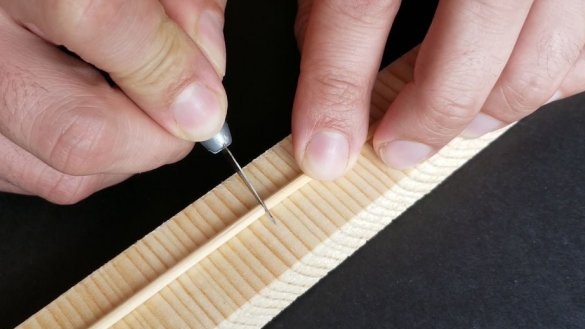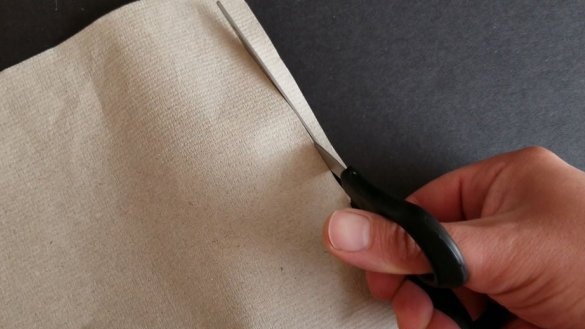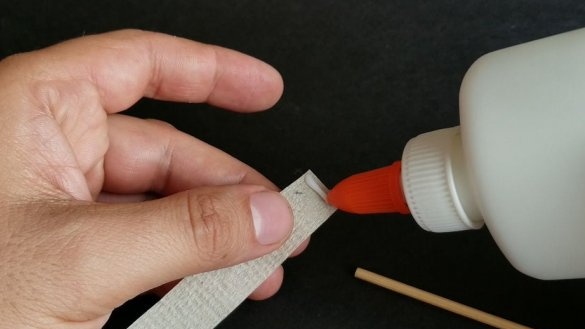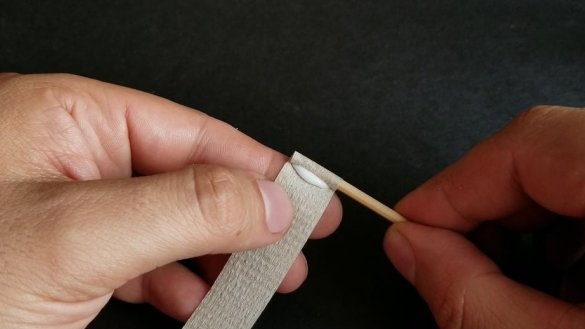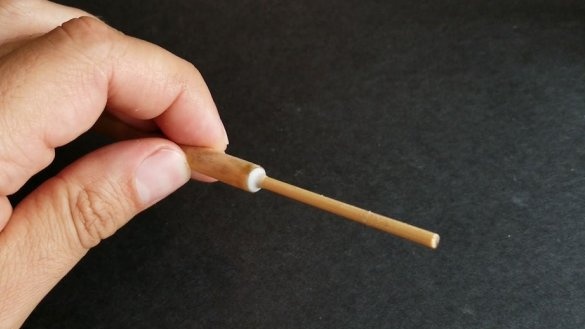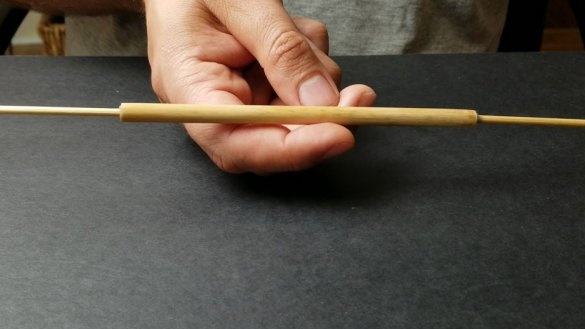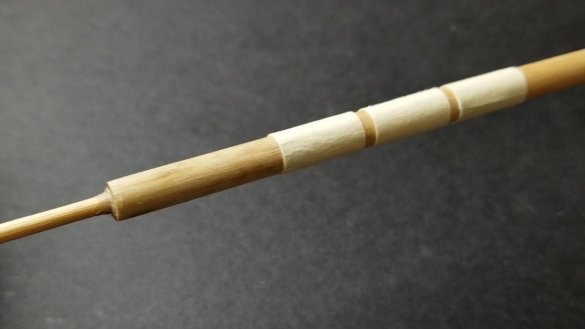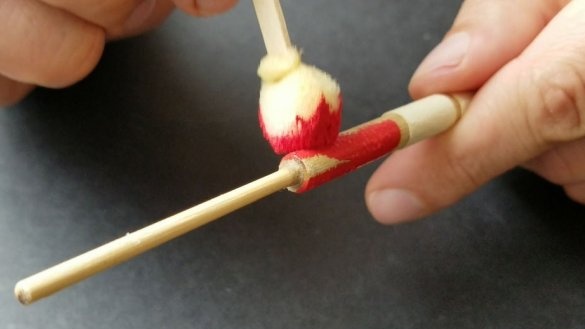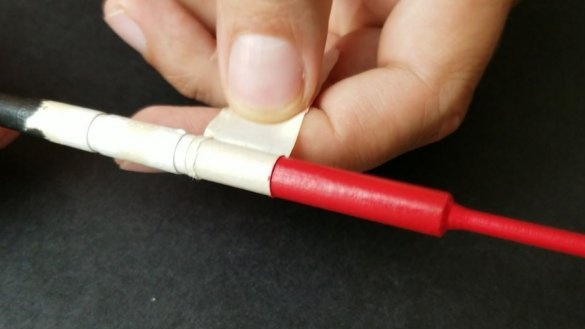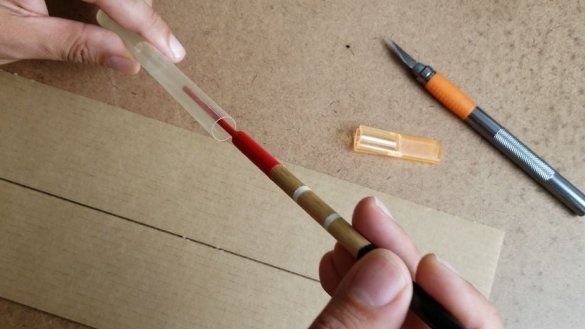Making a reel float is not so difficult. Let's see how the master does it.
The following materials are needed: acrylic paints, reeds, carpentry glue, polyurethane varnish or epoxy resin, brush, sandpaper, wooden skewers, scissors, fabric, masking tape.
Harvesting reeds. Need the thickest and hardest parts.
Cuts in length, in this case 12 cm.
Grinds the workpiece.
Of the skewers makes the antenna and keel. Slices from a skewer of 6 centimeters. Cuts a thin strip of fabric. Applies glue to it and wraps around the antenna and keel. Inserts them on both sides of the float.
Now you need to paint the float. The upper part will be painted red, the lower black. In the middle part are two white stripes.
When the paint dries, you need to cover the float with varnish or epoxy in 2-3 layers.
Everything is ready, it remains to fix the float on the fishing line and you can go fishing.

